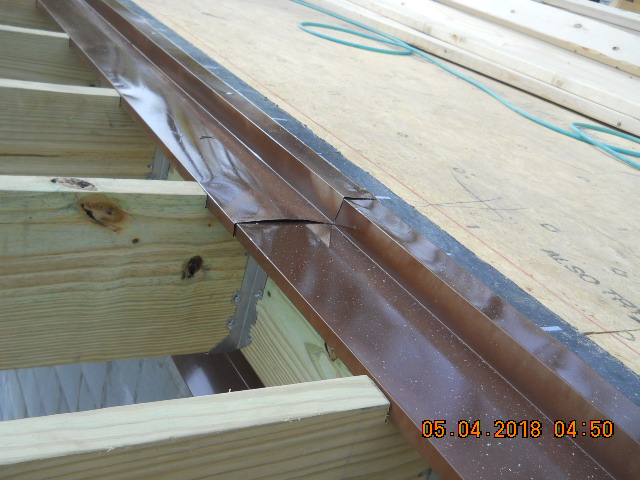Using Treated Wood for a Better House is about an Architect’s viewpoint about how to construct a more durable and environmentally resistive home.
While we all want a magic bullet that solves everything, that’s rather difficult to find. And there are such things as budgets, which are strained these days. HOME ARCHITECTS ® likes using pressure treated wood for several key locations in their projects and this article is not intended as an all-inclusive exhaustive list. But you can try using treated wood for a better house.
However, there are a number of places that PT (Pressure Treated) wood tends to perform much better than non-PT wood:
– SILL PLATES: in framing of wood stud walls, where the sill plate comes into contact with concrete and/or masonry or metal and other materials that would typically swiftly rot non-PT wood.
– IN CONTACT WITH CONCRETE OR MASONRY OR METAL: wherever joists and other wood contacts these surfaces, use PT wood.
– GROUND CONTACT PT: wherever it is necessary for wood to contact the ground use FOR GROUND CONTACT PT wood, which has a heavier treatment that normal PT wood. It is not recommended to do much of this.
– EXTERIOR WOOD SIDING & TRIMS (corners, door & window trims): Some homeowners and/or Contractors may balk at this, instead preferring white pine and other types of siding. Unfortunately, it has been this Architect’s experience that untreated wood of all types (including cedar, pine and others), tends to rot much more quickly than PT siding. And if the exterior PT siding wood is first coated with a quality solid exterior stain (front and rear would be ideal, but this doesn’t happen often in the real world), that extends the life (solidity) of the wood a great deal. Stain is key here, so that homeowners/Contractors can recoat the wood periodically (perhaps every 6 or 7 years depending on exposure), so you won’t have to sand off old paint. You can restain existing wood, usually without sanding, which greatly speeds the recoating work with much less time-intensive labor. Suggest using SS (Stainless Steel) nails or at the very least coated star-drive screws over-driven then covered with sealant.
– EXTERIOR EXPOSED FRAMING: such as for porch decks (see photo above). Take a good look at that photo above. You’re going to also see sill flashings. Yes flashingS (2). Look carefully down below the nailer plate and you’ll see the edge of the first flashing that is installed behind the nailer (and coated with sealant before installing the nailer). The top flashing is a “Z” configuration that conducts rainwater around the floor joint where using exterior doors (either French or SGD).
– WINDOW FRAMING: the window sill framing and subsill.
– FLASHING DRIP EDGES, FASCIA: Highly recommended, unless using something else manmade that cannot rot. However, the advantage of PT wood (like #2 SYP PT), is that it can take a nail and/or screw and hold it, which comes is handy when attaching those members and flashing and roofing in their vicinity. Once again: recommend solid staining BEFORE installing these pieces of wood, for best coverage and durability.
Now then: does use of PT wood guarantee that you won’t have bugs eating it? Not necessarily. You need to keep any kind of wood (in HOME ARCHITECTS opinion) above the ground. You can use For Ground Contact PT wood and many Builders do, but in general this Architect prefers keeping ALL wood above the ground. Just a better overall practice. Unbelievably, there was a flirtation with use of some types of treated wood as subterranean foundation walls decades ago. This company does NOT recommend that.
Spraying even PT wood that is within a foot or so of the ground with Boric Acid can be a good idea, particularly if that area of the construction will not be available for inspection or re-treatment in the future. But that’s a subject for another online article.
Even Terminix has online articles informing the public that bugs can still get into PT wood, however, they PREFER untreated wood. The highly toxic chemicals that used to be used to treat PT wood (great for keeping bugs away but not so good for humans) have generally been replaced with copper microscopic particles in suspension with fluid and vacuum-forced into the wood these days. While copper is nothing any living creature really wants to eat (especially molds and fungi), bugs such carpenter ants, boring bees and termites can eat it if they really want to do so. So: placing the PT wood where the bugs aren’t as likely to find it is a good idea. And protecting the wood with other coatings like solid exterior stain helps as well. However, HOME ARCHITECTS recently found a boring bee hole in PT wood siding, properly coated with solid stain, about 5/8″ in diameter and perhaps 3/8″ deep. Interesting that the bee evidently stopped after that first onslaught. So: the PT copper chemical inside the PT wood must have become unsavory to the bee, or one would have expected it to continue. Fortunately, that did not happen.
SO: DO have a pest spraying service like Terminix professionally treat around your house about every 3 months. Otherwise, opportunistic insects can and will visit you.
AND: Encapsulate your crawlspace (by pros) (don’t forget to leave that code required 3″ inspection gap at the top). And make sure the joints are overlapped and taped with durable tape compatible with the membrane. Check the adhesion of the tape once a year and add additional tape at the joints whenever the old tape is failing.
As they used to say on a TV cop show: “Be careful out there.” Hire an Architect.
Using Treated Wood for a Better House

